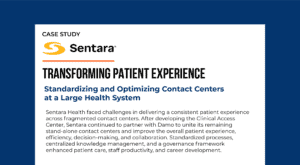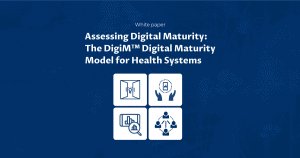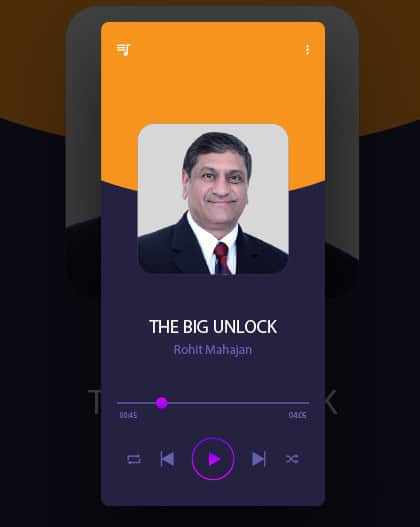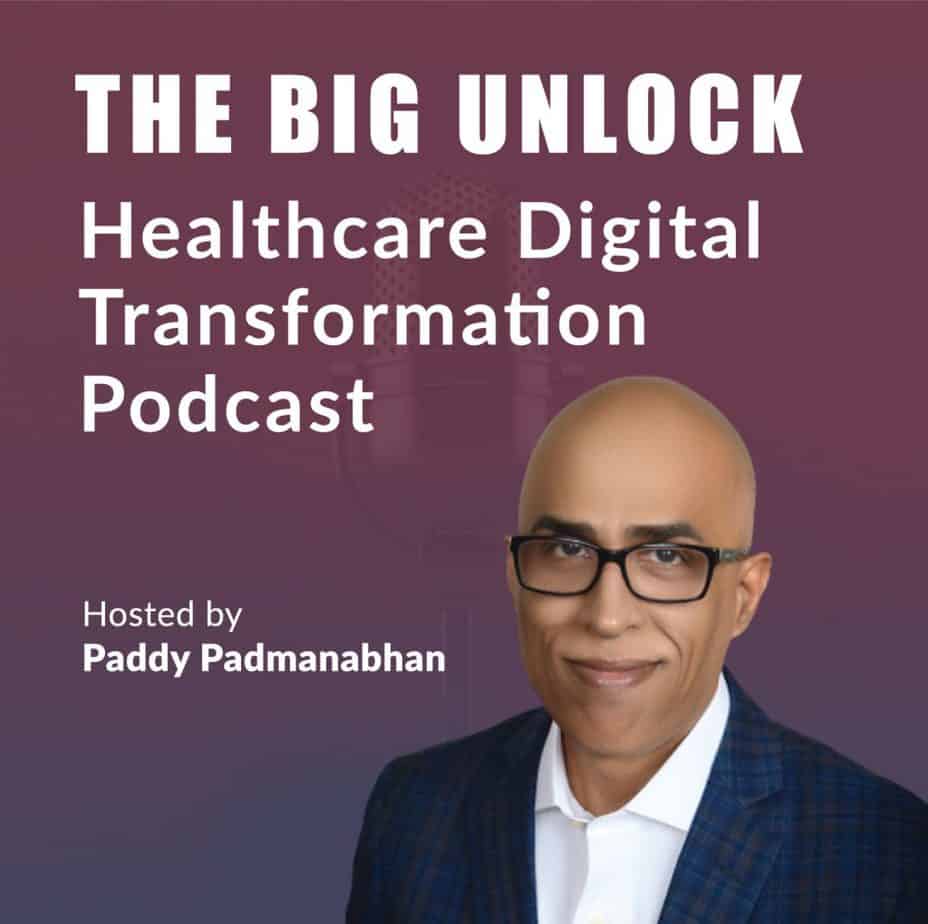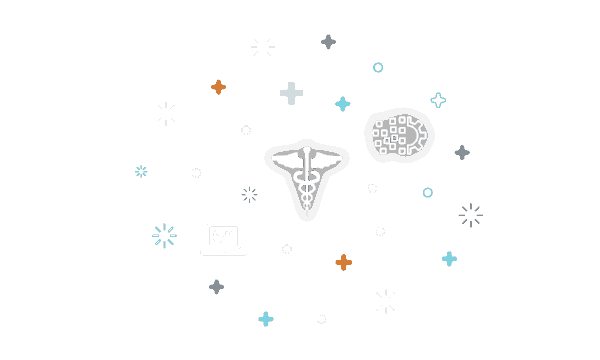Healthcare’s newest pivot: consumer identity as the cornerstone of digital health
Smart health systems are realizing that they must think about their sustainable growth strategies in terms of end-to-end user experience.

Originally published on Healthcare IT News
Digital-transformation programs at leading healthcare institutions that I work with are increasingly focused on two things: how to increase revenues and how to improve consumer experiences. There is a renewed focus on sustainable growth, not least due to the losses the nation’s leading health systems posted in 2021 and in the first half of 2022.
Digital health leaders are facing a new challenge today as the days of hand-waving about the strategic nature of digital investments have given way to a preference for cold-blooded execution. There is concurrently a Darwinian culling of the herd of digital health point solutions underway, exacerbated by the current pull-back in VC funding that poses an existential threat to tech startups operating at sub-scale.
The bold experimentation with digital health brought on by the pandemic two years ago has now receded to a consumer-focused approach that looks at demand aggregation, funnel conversion rates and customer lifetime value.
A new approach to patient experience: Digital health as product management
There is a realization now that health systems have to think about the growth problem as an end-to-end user experience problem. This requires a product management approach that works backward from user needs to design new multi-modal experiences and unlock new revenue streams from new digitally enabled healthcare business models.
Healthcare needs a new direction and a departure from the current approach of recreating the traditional in-person experience with an online experience, with all its flaws.
For most traditional health systems, it’s a difficult switch. Healthcare has never been “consumer” focused, driven by a “follow-the-money” approach fed by a fee-for-service model that rewards increased consumption of healthcare services.
We are now entering an era of multi-modal care that goes beyond substituting an in-person visit for a virtual visit. Digital health leaders are thinking beyond technology infrastructure modernization and application workflow optimization. They are building journey maps to understand patient experiences and gaps to drive personalization and improved outcomes.
These new approaches also require restructuring organizations and breaking down internal boundaries. Traditional marketing functions in leading systems are collaborating more closely with other functions, such as patient access and experience.
In one case, the health system has appointed a leader overseeing both marketing and digital patient engagement. In another, a large regional health system is implementing an enterprise CRM program that combines outbound campaigns to acquire new patients with contact center operations to engage more meaningfully with existing patients who might seek new services.
This integrated approach also requires an omnichannel communications strategy and platform and analytics capabilities to identify care gaps for targeted campaigns.
The nation’s leading health systems are rethinking their service-line strategies with these new approaches, supported by traditional consumer research and branding/marketing capabilities. Today’s mantra for healthcare marketers is meeting consumers where they are and effectively connecting them with the required healthcare services.
However, to put the needs of the customer first, they have to make it about the data, whether it is for analyzing communication preferences, developing propensity models or determining care gaps.
As patients start getting comfortable with in-person and virtual care, health systems also have to create hybrid care experiences relying on the continuity of data and authenticated states of patient interactions.
This has led to identity and identity-driven engagement and personalization strategies, a concept firmly embedded in many of our online experiences, such as media consumption and online shopping.
Putting the needs of the consumer first – the golden record and beyond
Building an effective patient/consumer engagement platform is based on identity. In healthcare, the notion of identity-driven, multimodal, omnichannel engagement has been a challenge for most organizations due to the lack of a national patient identifier, among other things.
A recent paper in the National Academy of Medicine correctly points out that matching an individual’s data across organizations remains an essential component for the learning health system of the future.
In the absence of a national identifier, organizations have to create what is referred to as a golden record, or a master record that identifies an individual consistently and accurately by linking the different identities that may exist for the individual, such as a patient, consumer or member.
The digital patient engagement platform of the future will have a robust identity verification and resolution capability driven by a golden record that allows individuals to personalize their experiences.
This is akin to how consumers set up media preferences and shopping choices on advanced platforms such as the New York Times and Amazon. An added benefit is the ability to engage patients beyond just an episode of care on a continuing basis to serve health and wellness needs in addition to treatment for medical conditions.
We have to defragment the healthcare experience first
Gaining access to and receiving healthcare is a fragmented consumer experience, at best, today. Historically, we have had a highly siloed healthcare data infrastructure and interoperability between various proprietary systems is a work-in-progress.
As consumer demands increase, the need to combine medical and nonmedical information such as demographics, web traffic data and social profiles will place an increasing burden on digital health leaders to operationalize consumer engagement platforms that can create targeted outreach campaigns, deliver seamless experiences for access to care and improve healthcare outcomes with data-driven interventions.
The fragmented nature of the data means that stitching together clinical, financial and demographic data from internal and external sources is one of the biggest tasks for healthcare today.
We are at the very beginning stages of the transformation. Our immediate priority is to transcend the clinical system of record, i.e. EHR systems, because an increasing amount of data relevant to the healthcare experience of the future sits outside the system of record.
Digital health leaders will need to build more consumer-friendly features such as identity federation that can improve personalization and help optimize workflows in access. Enhanced data management capabilities will enable advanced analytics such as AI and ML for better targeting and interventions.
At the same time, digital health leaders must consider data privacy, security and communication preferences to comply with HIPAA and other laws, a burden many online platforms for consumer goods and services don’t have to carry.
Identity management and omnichannel communication are on their way to becoming foundational capabilities for health systems to engage across in-person and virtual touch points that increase LTV. Personalization also enables caregivers to navigate patients to the most appropriate care.
The final piece of the equation is matching the supply to demand. In a hybrid environment, the same service may be available virtually or in person, in synchronous or asynchronous modalities. Advanced analytics and forecasting tools can improve steerage and match supply to demand.
Healthcare consumerism is a reality. One way or another, health systems must adapt to this new reality.

